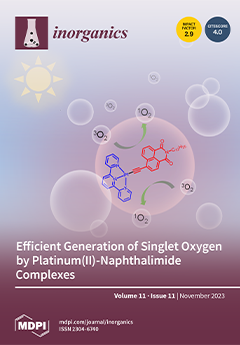In the context of investigating isostructural relationships between sulfates and monofluorophosphates, crystals of the double salts (NH
4)
2PO
3F·NH
4NO
3 (AFP·AN) and (NH
4)
2XO
4·3NH
4NO
3 (A
X·3AN;
X = Se, Cr) were grown from aqueous solutions and structurally characterized using X-ray diffraction and thermal analysis. Whereas the high-temperature forms of the two A
X·3AN double salts are in fact isostructural with the sulfate analogue, AFP·AN crystallizes with a reduced amount of NH
4NO
3 and thus has a unique crystal structure. Both AFP·AN and the two A
X·3AN compounds exhibit reversible structural phase transitions. Upon cooling, the monofluorophosphate double salt transforms from the monoclinic room-temperature polymorph (I;
P2
1/
n,
Z = 4) to the intermediate triclinic polymorph (II;
P1,
Z = 4) that in turn transforms to the monoclinic low-temperature polymorph (III;
P2
1/
n,
Z = 4). The two phase transitions (I) → (II) and (II) → (III) are characterized by a significant increase of the unit cell volumes upon cooling. The two A
X·3AN double salts transform upon cooling from a disordered monoclinic crystal structure (
P2
1,
Z = 2) to a monoclinic polymorph with a doubled unit cell (
P2
1/
c,
Z = 4). Such a phase transition is not observed for the sulfate analogue. All molecular moieties are fully ordered at −93 °C for the selenate double salt, whereas one of the nitrate anions remains disordered for the chromate double salt even at −173 °C. In all AFP·AN and A
X·3AN crystal structures, the nitrate anions play a crucial role during the phase transitions, and an extensive network of N–H···O hydrogen-bonding interactions is responsible for the cohesion of the crystal.
Full article





